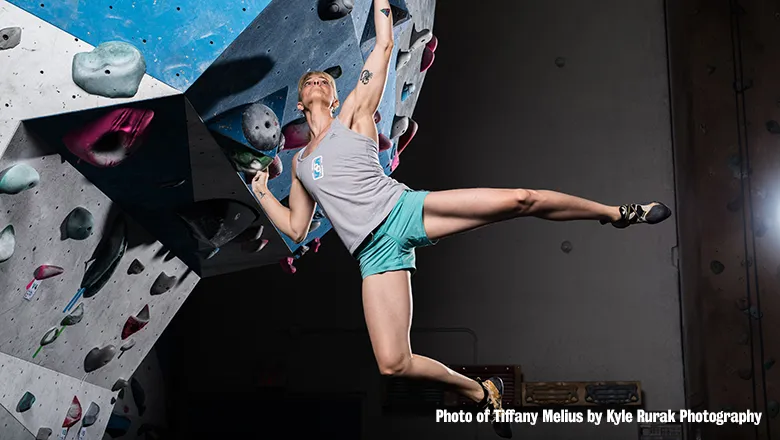15 April 2019
What would sport be like if we knew as much about women's bodies as men's?
Tiffany Melius
TIFFANY MELIUS: For too long women have been held back in sport due to a chronic lack of research on their physiology.

It is widely known that in sport, women are not treated the same as their male counterparts. From an early age, we encourage boys to take up sports and girls to pursue less athletic activities. The drop-off in rates of sports participation at age 15 for girls are double that of boys. When a minority of women do make it to the world of professional sport, they’re not even paid the same as men.
But are we holding women in sport back in other ways too? A review of 1,382 exercise medicine studies published between 2011 and 2013 found that women made up 39% of total study participants. The discrepancy is particularly noticeable in sport science studies – which looks at how the body works during exercise – where women account for only 3% of participants. In fact, up until as recently as 2015, it wasn’t a requirement for women to be a part of sports science research studies in the US. When women have been included in trials, often their results are too variable, meaning they’re treated as outliers and removed from the studies. This results in a huge research data gap.
This variability is the subject of the book ROAR, by Stacy T Sims, an exercise physiologist, nutrition scientist and elite athlete. The sub-heading of the book, “How to match your food and fitness to your female physiology for optimum performance, great health, and a strong, lean body for life”, gives you an indication of what she’s driving at. “You are not a small man. Stop eating and training like one,” her book asserts.
The reason for variable results in women’s data lies in the hormone cycle – natural to all biological women. While male hormones stay relatively stable, women’s hormones change week to week based on their menstrual cycle. So in early sports science studies, not only do women’s results vary from day to day, but they also vary from other women’s results, depending on where they are in their cycles. This is certainly a challenge; but is it a reason to give up studying 50% of the population altogether? Absolutely not.
Women are still widely under-represented in medical research studies, by as much as one to six. Caroline Criado Perez, a feminist campaigner in the UK, is making waves with her second book, Invisible Women, in which she calls out pervasive gender bias in data and highlights its serious consequences, particularly in medical research. From under-representation in clinical trials, to women being 50% more likely to have a heart attack misdiagnosed because their symptoms are often different from men’s - women are literally dying due to the gender data gap.
Dr Alyson McGregor, in her TED Talk on the dangerous side effects women can experience from medicine, states that: "Women are not just men with boobs and tubes – they have their own anatomy and physiology that deserves to be studied with the same intensity."
There is some hope to be had, and things are beginning to change. Governing bodies now demand female data be included in research trials, meaning the future of medical research for women is looking brighter. We might question why it has taken so long, but another question we should be asking is, What will women be capable of once the potential of our bodies, properly utilised and fuelled, is fully realised?
The recent win of the Montane Spine Race (and breaking of the race record – formerly held by a man – by more than 12 hours) by Jasmin Paris shows us what might be possible. But even that is difficult to substantiate due to the tiny sample sizes of women involved in races like these. We need comprehensive data on women’s biology to improve our understanding.
During low hormone phases, women’s physiology is most similar to men’s, and the “regular” sports science rules can largely apply. During high hormone phases, certain functions in the body change, resulting in symptoms such as increased inflammation, bigger appetite, disrupted sleep, heightened stress response, and reduced neuromuscular control. Women need to eat and work out a little differently for the best results.
Training in my pre-menstrual phase has always been tough – poor sleep and low energy levels can make me feel weak, or that I’m not trying hard enough, leading to feelings of guilt, self-doubt, and insecurity. But now I know it’s not me. Well, it is me; but it’s to do with my physiology, not my resolve, dedication, or commitment.
Even though I’ve only just discovered the benefits of training and physiology tools underpinned by research, as outlined in ROAR and made practical in apps like Fitrwoman, I already feel more optimistic about achieving my sporting goals. Imagine how young women athletes today will be able to perform once we have sports science developed based on their bodies, rather than that of their male counterparts. Research-informed practice and methods will enable them to work with, rather than against, their bodies, to achieve more than we ever thought possible.
As AFWL (Australian rules football league for women) coach Alan McConnell said: “Men have to play well to feel like they belong. Women have to feel like they belong to play well.” With the science behind me, I now feel like my body and I belong together and we can achieve more in my sport than I’d ever imagined. I hope that other young women will now feel like they can do the same.
Tiffany Melius is an Australian athlete hoping to compete in the Tokyo 2020 Olympics in the inaugural Sport Climbing event. She is also Executive Director of New View Mental Health Society and a life coach at Force of Nature Coaching. Visit her website.
